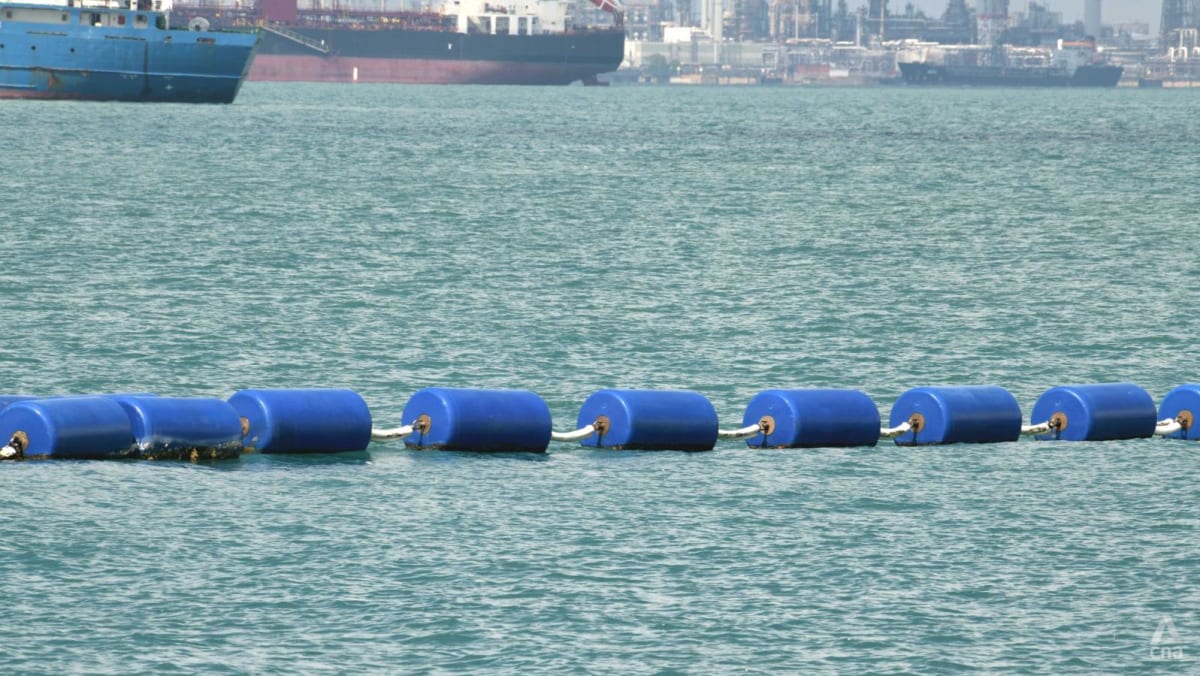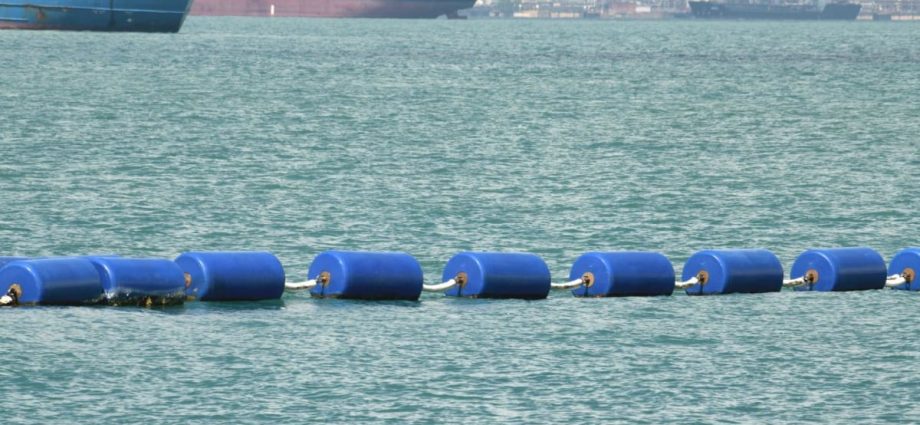
“PUSHED AGAINST THE BARRIER”
Several people who have capsized at the barrier or rescued people from there have uploaded videos online with their first-hand accounts.
In one YouTube video from 2020, a kayaker describes how he was pushed against the barrels by the current and could not free himself. He was then sucked under the floating barrels and drifted out to sea for about 30 minutes before being picked up by a boat.
According to Mr Aaron Ang, CEO of kayak fishing tour company Fever.sg, paddlers capsize there at least once every two months.
Kayak fishing enthusiast Mr Low said inexperienced paddlers may run into trouble due to their inability to “read the waters”.
“As the barrier is floating, water will push or force any object under it. The kayaks will be pushed on the broadside, making it very unstable in the situation … one will be struggling to stay upright.”
Once the kayak capsizes, the barrier does not give the paddler time and space to recover, he said.
“The capsized (person) may be pushed against the barrier that may be laden with sharp barnacles, making a self-recovery almost impossible, without going under and reorganising on the other side (of the barrier),” he said. “His or her buddy will be helpless as they are separated by the barrier.”
Mr Low said he raised these and other concerns with the police coast guard at a mariners’ meeting a few years ago as a community representative for the kayak anglers. He and others in the community have continued to provide feedback to the coast guard and the Maritime and Ports Authority (MPA), he added.
Interviewees also said that the floating barrels can be a hindrance during emergencies. While there are openings through the barrier, they are several hundred metres apart.
Mr Ang said that if one was caught out at sea with a problem and needed to evacuate to shore, the time required to paddle back to safety is extended by the need to circumvent the barrier and get to an opening.
“Without the barrier, it could be a five-minute paddle to the nearest safe landing point, but with the barrier, the distance to a barrier opening could be 20 to 30 minutes away, plus another five minutes to shore. In a lightning alert situation or medical emergency, that could be life and death.”
He added that if the current was strong, a kayaker would paddle as close to shore as possible as the current is weakest there but if one was outside the barrier, that is not possible.
Kayakers also said that rescue options are limited, and most who capsized there were rescued by passing private boats or other watercraft. MPA and coast guard vessels are “too big and cumbersome” to help with any rescue should one be pinned at the barrels, said Mr Low.
“They have made some changes recently to the barrier positioning but it is not enough,” he said. “It’s a balance between national interests and community interests. The social cost of the installation outweighs the benefits at Sentosa area due to the elements.”

